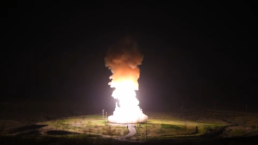Silkwood died 50 years ago, but her legacy as a whistleblower lives on.
By Robert Alvarez, Bulletin of the Atomic Scientists
On the evening of November 13, 1974—that is, 50 years ago—Karen Silkwood was driving to a meeting with a New York Times reporter and an official of the Oil, Chemical and Atomic Workers (OCAW) union. Her car flew off the road and hit a culvert on a lonely highway in western Oklahoma, killing her instantly. Karen was a union activist working as a technician at a plutonium fuel fabrication plant in Cimarron, Oklahoma owned by the Kerr-McGee Corp.
Several days before her death, Silkwood’s apartment was purposefully contaminated with highly toxic plutonium—which she had no access to—from the nuclear plant where she worked. Because of her activism, the company had put her and her roommates under constant surveillance. Documents about problems at the plant that two witnesses had seen before Silkwood’s fateful drive were missing. An independent investigation found evidence that her car was run off the road—contradicting official conclusions.

Karen became a whistleblower in large part because Kerr-McGee never bothered to tell workers that microscopic amounts of plutonium in the body can cause cancer. Karen became alarmed after dozens of workers, many fresh out of high school, had breathed in microscopic specks of plutonium and were required to undergo a risky procedure (chelation) to flush the radioactive contaminant from their bodies. It’s a procedure that can, even if successful in removing contaminants from the body, harm the kidneys.
Between 1970 and 1975, two metric tons of weapons-usable plutonium were shipped by truck from the Hanford nuclear production complex in Washington state to the Kerr-McGee plant in Oklahoma, where the plutonium was to be mixed with uranium and placed into 19,000 stainless steel fuel rods. At the time of Karen’s death, the Atomic Energy Commission found that about 40 pounds of plutonium had gone missing—enough to fuel several atomic bombs.
Since then, numerous books, articles, documentaries, and a critically acclaimed Hollywood motion picture have focused on the circumstances surrounding Silkwood’s death. My late wife and I were engaged in efforts for nearly a decade to achieve justice for her parents and children; those efforts were chronicled in some detail in Howard Kohn’s 1981 book, Who Killed Karen Silkwood? Was this an unfortunate accident, or was Karen Silkwood run off the road and killed to stop her from revealing dark secrets? After more than 40 years, the definitive answers to these questions remain unavailable.
Recent Posts
The Perilous Norm of Weapons Testing
November 10, 2025
Take Action Now It’s easy to dismiss a “test” as something less than the full terrifying reality of nuclear weapons use.By Emma Claire Foley On…
The Old Road Is Rapidly Aging
November 10, 2025
Take Action Now The Democratic Establishment Mistook Longevity for LeadershipBy Jackson Rubin, The Working Model If the Mamdani victory on Tuesday…
‘Absolutely Pathetic’: Senate Democrats Denounced For Caving To GOP In Shutdown Fight
November 10, 2025
Take Action Now “Let’s be clear — this proposal isn’t a compromise, it’s a capitulation,” said one progressive lawmaker in the US House.By Jon…
Layoffs in 2025 Second-Highest Since 2009 in Potential Sign of Looming Recession
November 9, 2025
Take Action Now “Those laid off now are finding it harder to quickly secure new roles,” one of the report’s authors said.By Chris Walker,…




